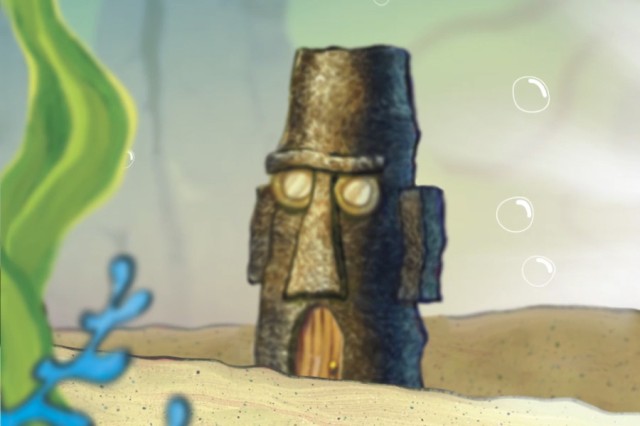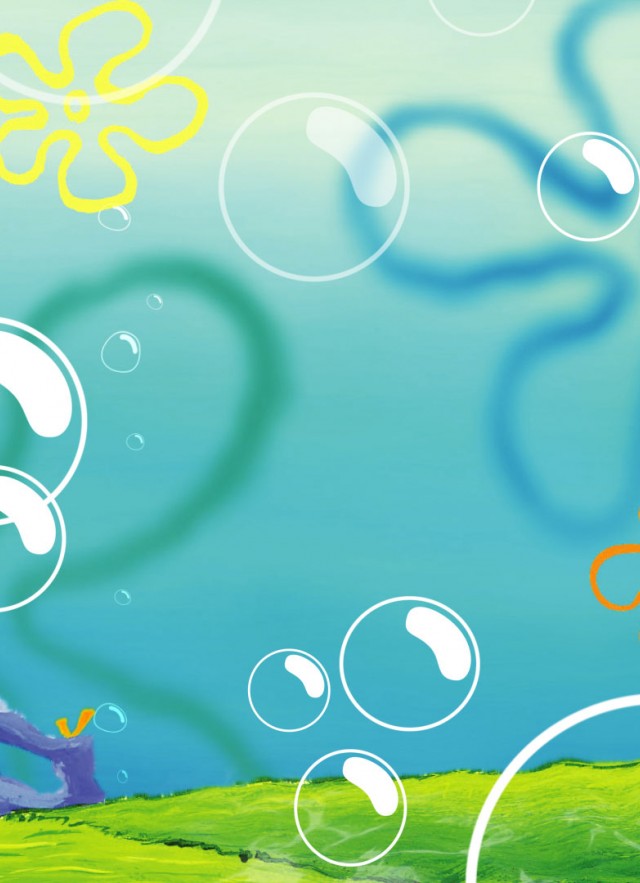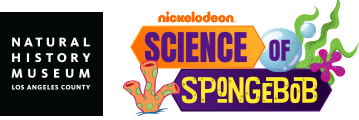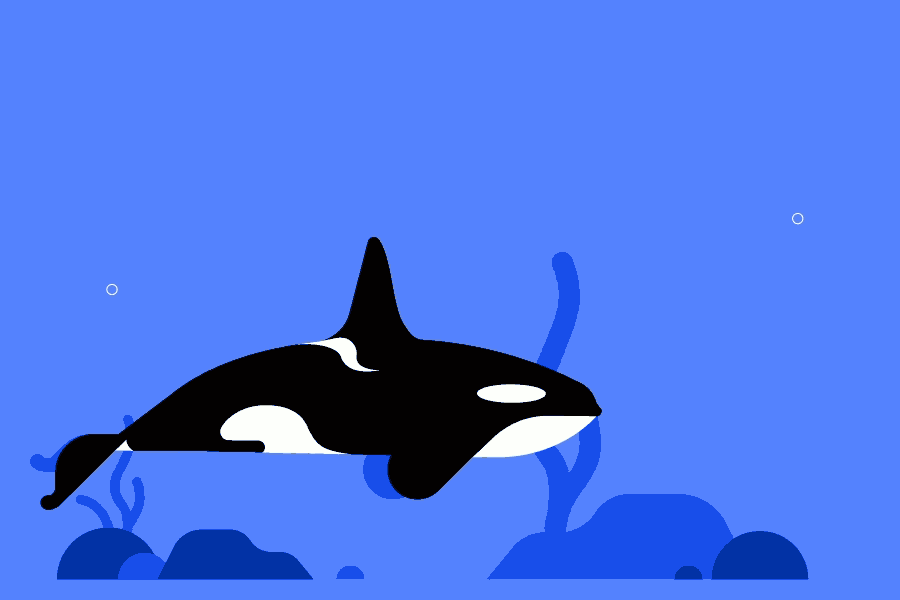
Video

A partnership with Nickelodeon
Join the Natural History Museum and Nickelodeon Our World as we dive into the real science behind your favorite Bikini Bottom characters and their underwater world.
We’re showcasing the incredible work of museum scientists, and even community scientists (like you!), to highlight ways we can all help make a difference for our planet. From restoring marine habitats to protecting biodiversity (the variety of life on Earth), discover how science and action go hand in hand to keep our oceans healthy.
Enjoy fun and educational content as we explore marine biology, ocean conservation, and rare collections from our museum! Watch engaging videos featuring NHM’s science experts and our porous pal, get hands-on with DIY activities, and catch up on virtual chats with our Museum Educators.
Travel back in time and beneath the waves to discover our fossil past
Bikini Bottom was built with a lot of imagination, but also a lot of science! At NHM, many of our scientists plunge into the world of ocean animals, studying everything in the sea from teeny tiny crustaceans to fish of all sizes, and whales, which include some of the largest animals that have ever lived. Meet your guides to ocean life below:
Bill Ludt
Assistant Curator, Ichthyology
Dr. Ludt is an ichthyologist, an expert on the world of fishes. Fishes are the largest group of vertebrates (animals with backbones), which means they come in all kinds of shapes and sizes!
Austin Hendy
Assistant Curator, Invertebrate Paleontology
Even the smallest ocean animals can become a fossil, and it's an Invertebrate Paleontologist’s job to study them. These tiny fossils help scientists ask and answer some big questions about the history of the world’s oceans and their future.
Kathy Omura
Collections Manager, Marine Biodiversity Center
Kathy was the first person to join the Marine Biodiversity Center when it opened in 2000. She earned a B.S. in Wildlife Management from the University of Alaska-Fairbanks and she came to NHM with 13 years of marine invertebrate taxonomy experience. Kathy conducted biological monitoring surveys at the University of Hawaii and helped assess the effects of the Exxon Valdez oil spill on eelgrass communities in Prince William Sound, Alaska. Kathy oversees the Marine Biodiversity Center’s Porifera (sponge) and Cnidaria (coral) Collections. Her many years of working in Alaska, and Hawaii and California have given Kathy a deep appreciation of the word “biodiversity,” and working with the museum’s collections has expanded that understanding even further.
Dean Pentcheff
Project Manager, DISCO
Dean helps lead NHM’s Diversity Initiative for Southern California Ocean (DISCO), a project trying to identify all the underwater invertebrates (animals without backbones like crabs) swimming around California using their DNA from ocean water.
Jorge Velez-Juarbe
Associate Curator, Mammalogy (Marine Mammals)
Dr. Velez-Juarbe studies marine mammals like dolphins, sea lions and walruses. It’s a whale of a tale, but by looking at their bones, he’s trying to learn everything he can about their history.
Jann Vendetti
Twila Bratcher Chair in Malacological Research and Associate Curator, Malacology
Malacology is the study of mollusks, animals like clams and octopuses, as well as Dr. Vendetti’s speciality: snails. From your backyard to the ocean floor, Dr. Vendetti’s busy learning everything she can about these fascinating critters.
Adam Wall
Collections Manager, Crustacea
Adam is responsible for overseeing the curation, digitization, and loans of specimens for research or exhibit, and visitor access related to the world’s fourth largest collection of Crustacea specimens. Adam’s research interests include studying both broad trends in marine biodiversity with methods such as DNA barcoding and environmental DNA (eDNA) as well as focusing in on smaller groups of animals by using methods such as population genetics, phylogenetics, and systematics. Some of Adam’s favorite groups to study include the Isopoda (a.k.a. pill bugs, roly polies, or slaters), Anostraca (a.k.a Fairy Shrimp or Sea-Monkeys), and deep sea hydrothermal vent Decapoda (shrimps and crabs). Adam has conducted extensive research throughout the eastern Pacific Ocean as well as in Central America and Australia.
Jenessa Wall
Assistant Collections Manager, Marine Biodiversity Center
Jenessa joined the Marine Biodiversity Center in 2014 where she is one of the project managers for the Diversity Initiative for the Southern California Ocean (DISCO), leading the workflow for specimen collection, specimen curation and data curation as well as building a DNA barcode library for the marine invertebrates of Southern California.
Regina Wetzer
Curator and Director, Marine Biodiversity Center
Dr. Wetzer runs the Marine Biodiversity Center at NHM and is an expert on invertebrates, too, especially isopods. Did you know that roly polys also live underwater and some of them are as big as a house cat?
Want even more? Dive into the Science of Slime! Check out more videos, fun DIY activities, and silly slime facts.

